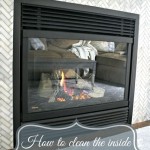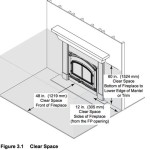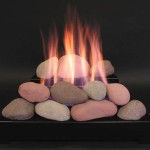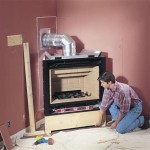How To Replace a Fireplace
Replacing a fireplace is a significant home improvement project that can enhance both the aesthetic appeal and the functionality of a living space. Whether the existing fireplace is outdated, damaged, or simply no longer suits the homeowner's needs and preferences, a replacement can offer a chance to upgrade to a more efficient, stylish, and safer option. The process of replacing a fireplace involves careful planning, preparation, and execution to ensure a successful outcome. This article provides a detailed guide on how to replace a fireplace, encompassing the key steps and considerations involved.
Before embarking on the replacement process, it is crucial to thoroughly assess the existing fireplace and the surrounding area. This evaluation will inform the selection of a suitable replacement unit and will identify any potential challenges or limitations that may arise during the installation. The assessment should encompass the following aspects:
* The type of existing fireplace: Determine whether it is a traditional wood-burning fireplace, a gas fireplace, or an electric fireplace. The type of existing fireplace will influence the available replacement options and the necessary installation procedures. * The dimensions of the fireplace opening: Measure the width, height, and depth of the existing fireplace opening to ensure that the new fireplace unit will fit properly. * The condition of the chimney and flue: Inspect the chimney and flue for any signs of damage, such as cracks, deterioration, or obstructions. A damaged or obstructed chimney can pose a serious safety hazard and must be repaired or replaced before installing the new fireplace. * The availability of gas or electrical connections: If replacing a gas or electric fireplace, ensure that the necessary gas or electrical connections are readily accessible and in good working order. * Local building codes and regulations: Research and comply with all applicable local building codes and regulations regarding fireplace installation. These codes may specify requirements for venting, clearances, and safety features.Once the assessment is complete, the next step is to select a suitable replacement fireplace unit. A wide variety of fireplace types, styles, and features are available to choose from, each with its own advantages and disadvantages. The selection process should consider the following factors:
* Desired fuel type: Consider the fuel type that is most convenient and cost-effective for the homeowner. Options include wood, gas, electric, and ethanol. Wood-burning fireplaces offer a traditional aesthetic and a natural ambiance, but require a steady supply of firewood and regular maintenance. Gas fireplaces provide convenience and ease of use, but require a gas line connection. Electric fireplaces are easy to install and operate, but may not provide the same level of heat output as wood or gas fireplaces. Ethanol fireplaces are ventless and portable, but may not be suitable for all applications. * Heating capacity: Select a fireplace unit with a heating capacity that is appropriate for the size of the room or area to be heated. Overheating can lead to discomfort and energy waste, while underheating may not provide adequate warmth. The heating capacity of a fireplace is typically measured in British thermal units (BTUs). * Style and design: Choose a fireplace unit that complements the existing décor and architectural style of the home. Fireplaces are available in a wide range of styles, from traditional to contemporary. * Energy efficiency: Look for a fireplace unit that is energy efficient to minimize energy consumption and reduce heating costs. Energy-efficient fireplaces typically have features such as sealed combustion chambers, electronic ignition systems, and programmable thermostats. * Safety features: Ensure that the fireplace unit is equipped with appropriate safety features, such as a safety shut-off valve for gas fireplaces and a overheat protection system for electric fireplaces.After selecting the replacement fireplace unit, the next step is to remove the existing fireplace. This process can be complex and requires caution to avoid damaging the surrounding structure. The removal process should involve the following steps:
* Disconnect utilities: Turn off the gas or electricity supply to the existing fireplace. For gas fireplaces, it is essential to shut off the gas supply at the main valve and to disconnect the gas line from the fireplace unit. For electric fireplaces, unplug the unit from the electrical outlet or turn off the circuit breaker. * Remove fireplace accessories: Remove any fireplace accessories, such as grates, screens, and decorative logs. * Detach the fireplace unit: Depending on the type of fireplace, the unit may be attached to the wall or floor with screws, bolts, or adhesive. Carefully detach the fireplace unit from the surrounding structure, using appropriate tools such as a screwdriver, wrench, or pry bar. * Dispose of the old fireplace: Dispose of the old fireplace unit in accordance with local regulations. Some municipalities may have specific requirements for the disposal of fireplace components.Preparing the Fireplace Opening
Once the existing fireplace has been removed, the fireplace opening must be prepared to receive the new fireplace unit. This preparation may involve cleaning, repairing, or modifying the fireplace opening to ensure a proper fit and safe installation. The preparation process should include the following steps:
* Clean the fireplace opening: Remove any debris, dust, or soot from the fireplace opening. This can be done with a vacuum cleaner, brush, or damp cloth. * Repair any damage: Repair any cracks, holes, or other damage to the fireplace opening. This may involve patching cracks with mortar or replacing damaged bricks or stones. * Modify the opening if necessary: If the new fireplace unit is a different size or shape than the existing fireplace, it may be necessary to modify the fireplace opening. This may involve cutting away excess material or adding shims to create a snug fit.Installing the New Fireplace Unit
With the fireplace opening properly prepared, the next step is to install the new fireplace unit. The installation process will vary depending on the type of fireplace and the manufacturer's instructions. However, the following general steps should be followed:
* Position the fireplace unit: Carefully position the fireplace unit in the fireplace opening. Ensure that the unit is properly aligned and level. * Connect utilities: Connect the gas or electricity supply to the fireplace unit. For gas fireplaces, it is essential to have a qualified gas technician connect the gas line to ensure a safe and leak-free connection. For electric fireplaces, plug the unit into the electrical outlet or connect it to the circuit breaker. * Secure the fireplace unit: Secure the fireplace unit to the surrounding structure with screws, bolts, or adhesive, as specified by the manufacturer. * Install venting: If the fireplace unit requires venting, install the venting system in accordance with the manufacturer's instructions and local building codes. Ensure that the venting system is properly sealed and insulated.Finishing the Fireplace
After the fireplace unit has been installed, the final step is to finish the fireplace and surrounding area. This may involve adding decorative trim, installing a mantel, or painting or tiling the surrounding wall. The finishing process should consider the following aspects:
* Install decorative trim: Add decorative trim around the fireplace opening to create a finished look. Trim options include wood, stone, and metal. * Install a mantel: Install a mantel above the fireplace opening to provide a decorative shelf. Mantels are available in a wide range of styles and materials. * Paint or tile the surrounding wall: Paint or tile the wall surrounding the fireplace to complement the fireplace unit and enhance the overall aesthetic. * Test the fireplace: Once the finishing touches have been completed, test the fireplace to ensure that it is functioning properly. For gas fireplaces, check for gas leaks using a gas leak detector. For electric fireplaces, ensure that the unit is heating properly. * Have a professional inspection: For gas fireplaces, it is recommended to have a professional inspection to ensure that the installation is safe and compliant with local building codes.
Replacing Your Condo Fireplace Vancouver Gas Fireplaces
-small.gif?strip=all)
How To Replace Your Old Open Fire With A New Efficient Gas Fireplace

How To Remove A Fireplace Surround Direct Fireplaces

Fireplace Repair Rebuilding Company Chimney Masonry Service

How To Fit And Replace A Fire Surround Homebase

Replacing A Gas Fireplace With Real Wood Buringing One Hometalk

How To Update A Fireplace On Budget Home Matters Ahs

Diy Fireplace Makeover How To Convert A Wood Burning An Touchstone Home S Inc

How To Replace Your Fireplace Mantel

Time To Replace Wood Burning Prefab Fireplace Greenville Sc Blue Sky








